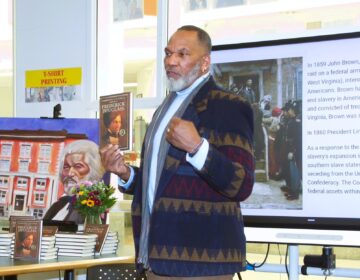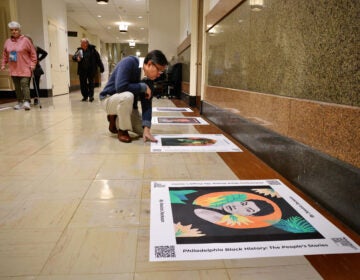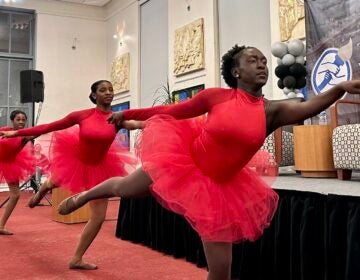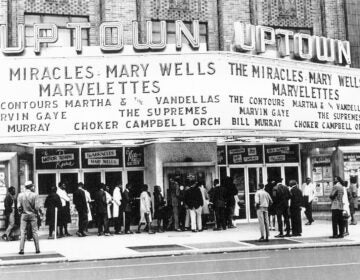Collages at Philly’s Print Center reimagine race and portraiture
Artist Gary Burnley in the Print Center’s 98th annual competition mashes Black and white portraits into the same image.
Listen 1:54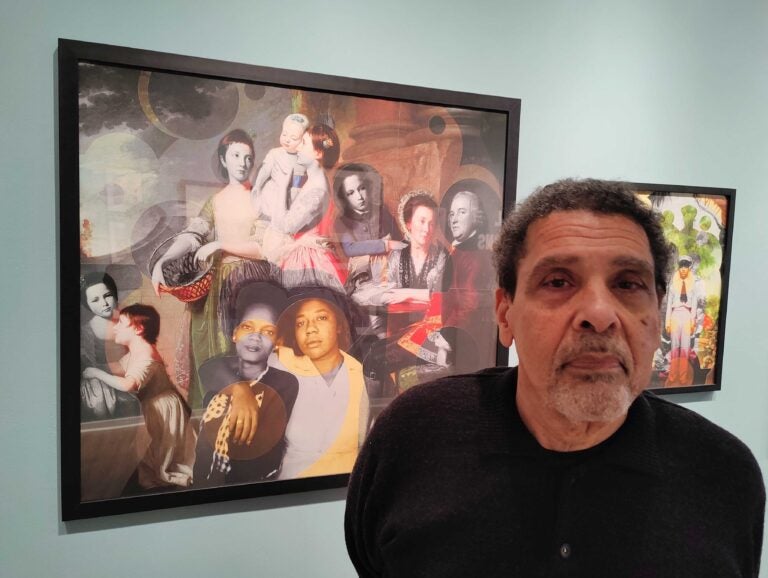
Artist Gary Burnley with his ''The Leigh Family'' (2020) at the Print Center in Philadelphia. (Peter Crimmins/WHYY)
From Philly and the Pa. suburbs to South Jersey and Delaware, what would you like WHYY News to cover? Let us know!
Some portraits on view at the Print Center exhibition, “Caste,” look Frankensteined. A photograph of a Black person has its mouth cut out and replaced by that of a white person, from a historic painting of a different era. An image of a Black child is bisected and given the arms of a white person.
Artist Gary Burnley wants to disorient the viewer.
“Is that one person? Is that two people? What do they have to do with each other,” Burnley said. “How do you deal with putting them together? Do they have anything in connection?”
The Print Center, near Philadelphia’s Rittenhouse Square, is exhibiting Burnley’s illusory collages as part of its 98th annual international competition exhibition.
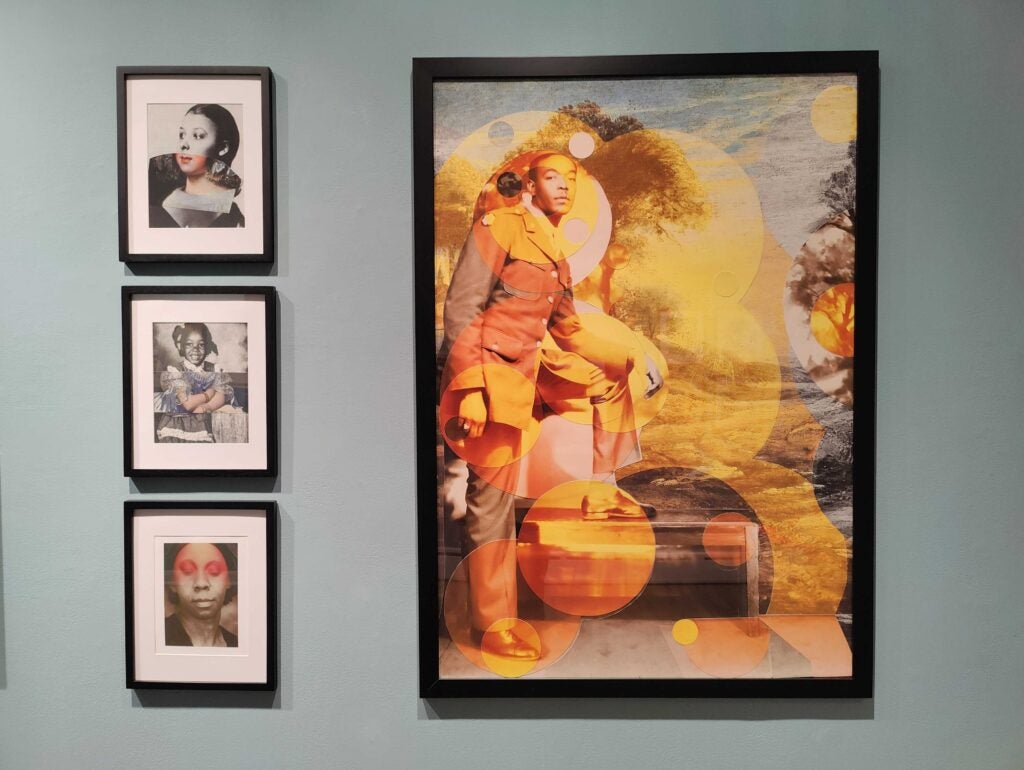
Burnley, a St. Louis, Missouri-born artist now living in Connecticut, thinks about the long history of portraiture as a site of racial power dynamics. His mash-ups turn historic Black and white portraiture into unlikely bedfellows.
Burnley thinks a lot about a line from the 2015 book “Negroland” by Margo Johnson, a memoir about growing up in a wealthy, mid-century Black enclave of Chicago. “Being an Other, in America, teaches you to imagine what can’t imagine you,” Johnson wrote.
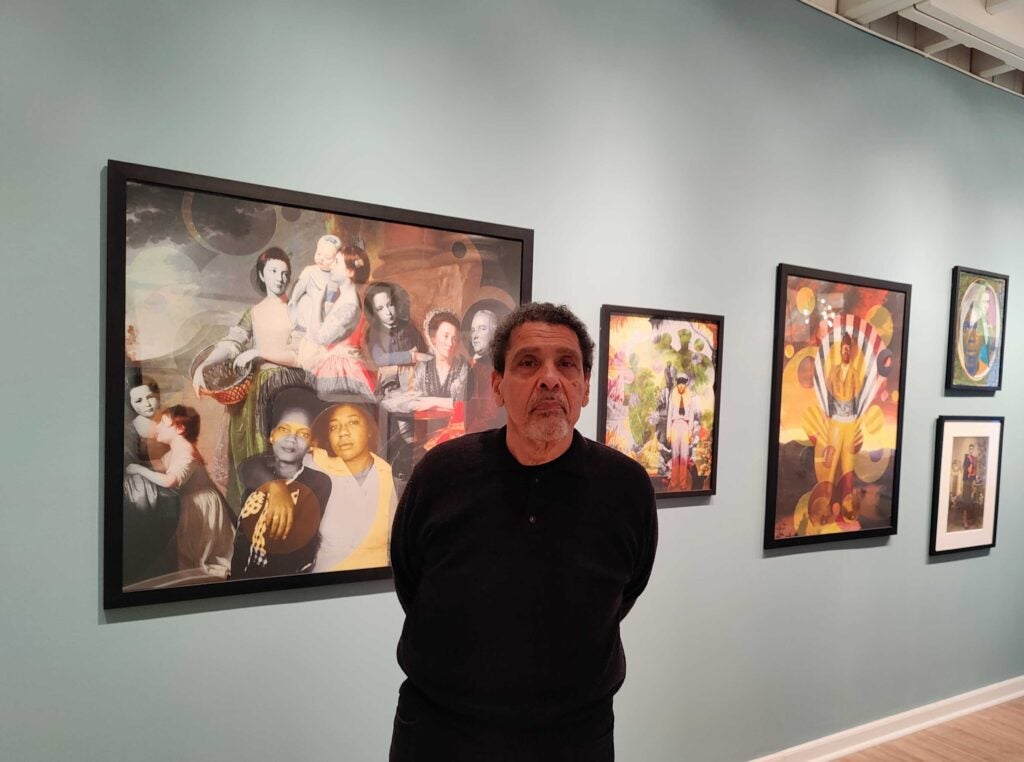
“The history of art, for the most part, has left Black faces out,” Burnley said. “They’ve always been in the shadows and the background, not the thing that begins to build concepts about beauty, about social status, about identity. By making images that you couldn’t imagine being in that time and place, I’m trying to disrupt the way you look at both of those images.”
Burnley does not identify the source images he uses in his collage, or who the picture fragments were originally supposed to represent. They might come from Renaissance portraits, 19th-century genre paintings, high school yearbooks, or anything in between. More important than the specific backstory of the images is the effect they have when smashed together, often with little attempt to hide the seam.
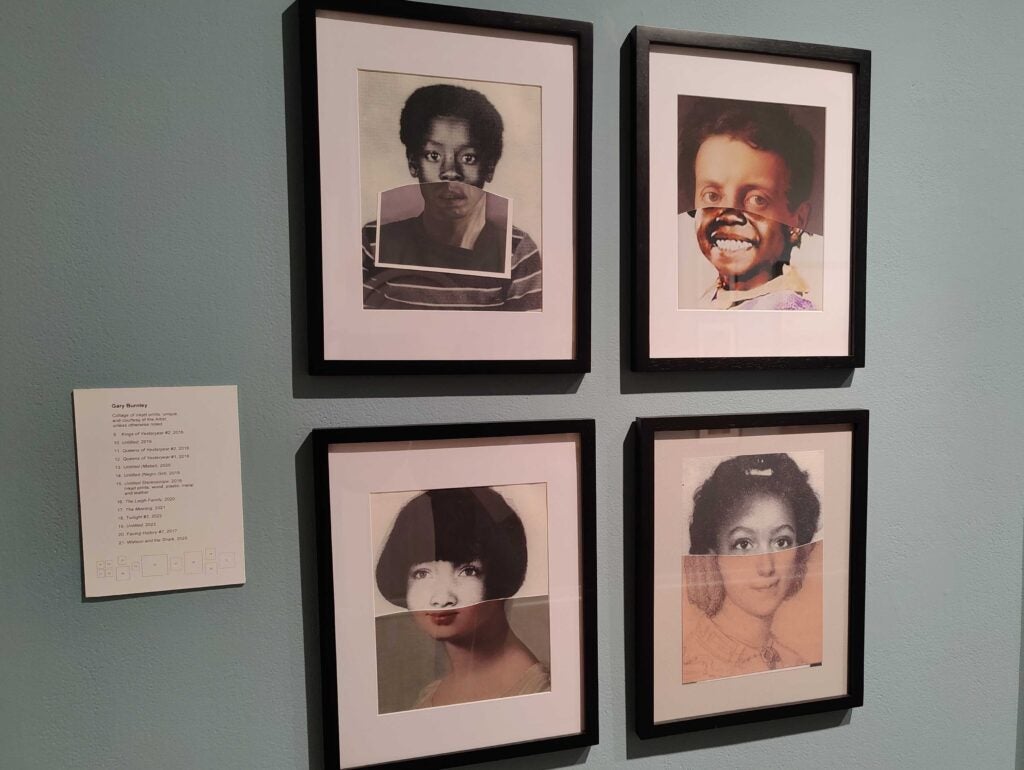
Burnley’s investigation of collage effects began when he started playing around with a stereoscope, a device where two similar images are viewed through a simple binocular scope to create a 3-D optical illusion. He put two dissimilar pictures in the scope — usually a picture of a Black person and that of a white person — and challenged the viewer’s eyes and brain to make sense of it.
An example of one of Burnley’s stereoscopes is on view at the Print Center. Burnley said with stereoscopes it was impossible to know what the viewer was perceiving, how their brains were processing the disjointed stereo effect. So he started making collages to codify the visual messaging he wanted to get across.
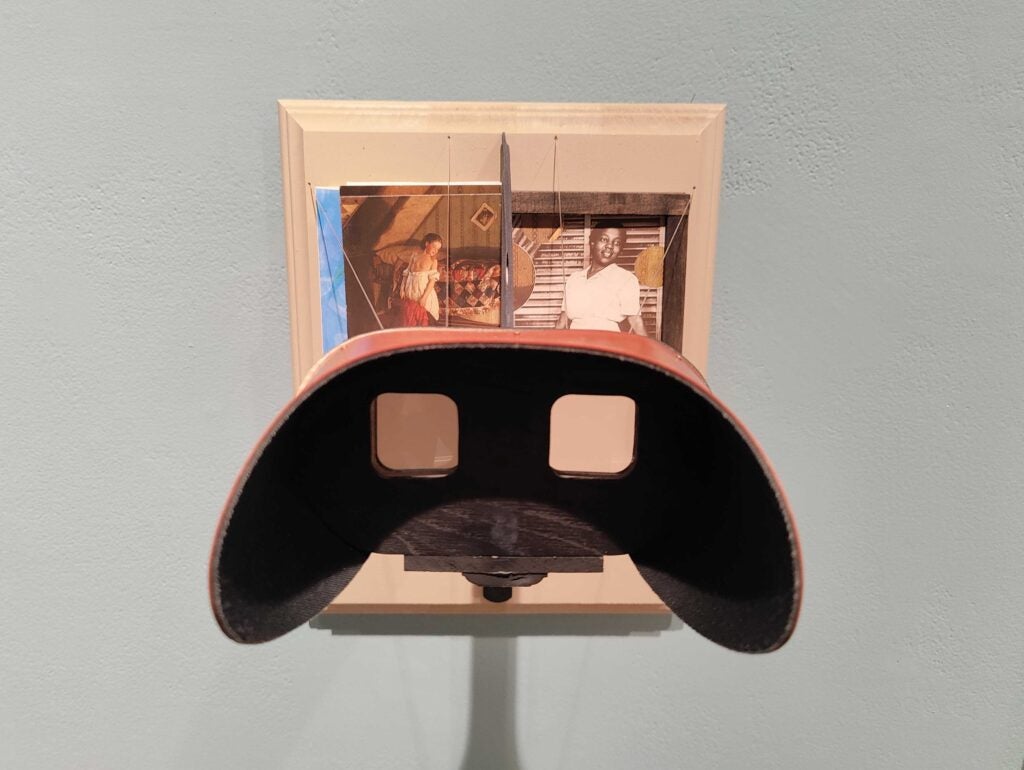
“I’m really working with the physicality of forcing these things together,” he said. “With the collages, I’m really plastering one thing on top of another. You can start to really feel the layering and the fact that you’re looking through one thing to something else.”
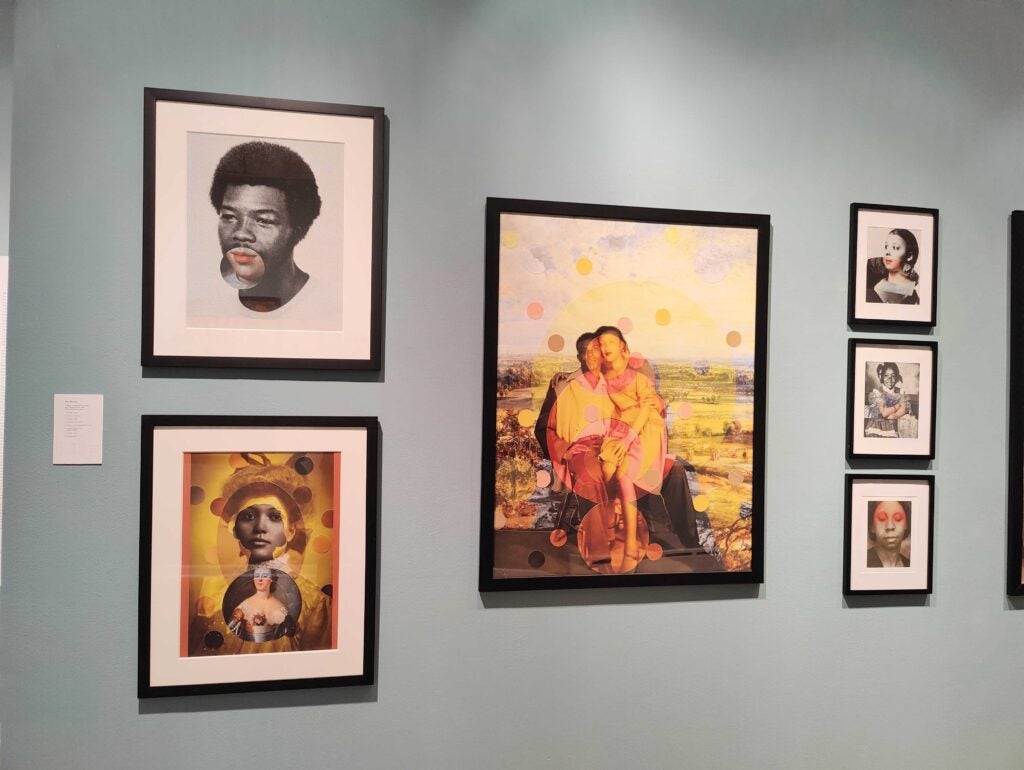
Burnley, who is the father of former WHYY contributor Malcolm Burnley, says his collages are not meant to comment on specific historical or political moments from which the original imagery came. He imagines his artfully married images talking to each other.
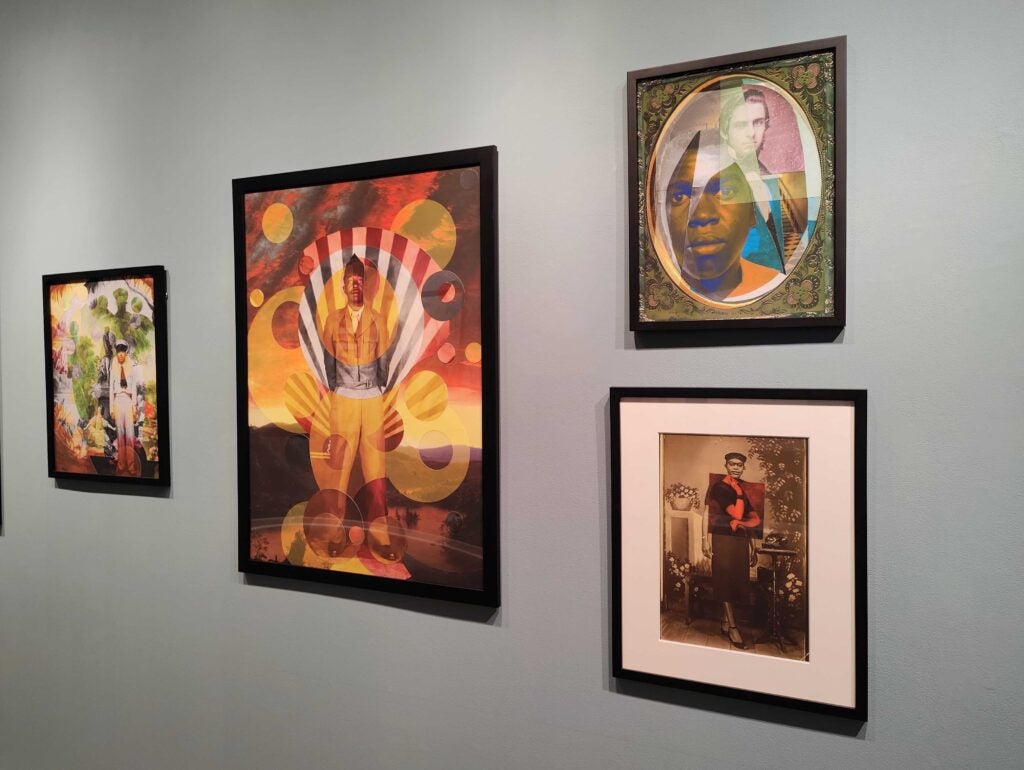
“They talk about who they are individually, but they also talk when they come together to have a conversation about, what is beauty, or elegance?” he said. “There are vernacular pictures of black people in these very exotic landscapes. Those were always reserved for kings and queens and noble people: think of a [Thomas] Gainesboro out in that beautiful landscape. I just think it’s interesting to put someone else in that space.”
“Caste,” works by Gary Burnley, is now at the Print Center along with two other international competition finalists Ranran Fan (born Chinese, now in Texas) and Natalia Mejía Murillo (born Columbian, now in Qatar). The exhibition will be on view until March 30.

Saturdays just got more interesting.
WHYY is your source for fact-based, in-depth journalism and information. As a nonprofit organization, we rely on financial support from readers like you. Please give today.



